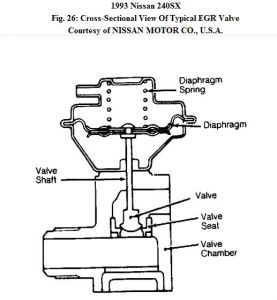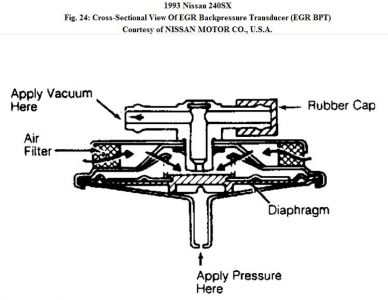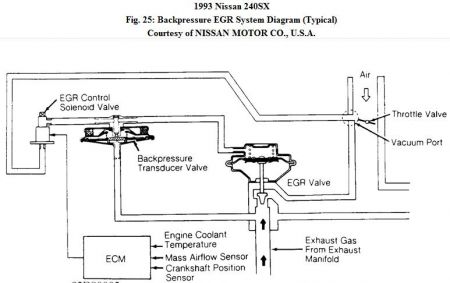Hi juanfariasc,
Thank you for the donation.
The problem of the EGR and transmission not shifting could be related if it is due to a power supply interruption.
Here are the diagnostics for Code 32. The item for checking power should be given additional attention but since problem is intermittent, it might not show all the time so you might have difficulty diagnosing it.
DTC 32: EGR FUNCTION
NOTE: On California models, DO NOT perform this test if DTC 12, 13, 35, or 43 is present.
1 . Check Vacuum Source To EGR Valve - Start engine and warm to operating temperature. Disconnect hose from EGR valve and check vacuum. Vacuum should not be present. Raise engine speed to about 2000 RPM and check vacuum. Vacuum should be present. If vacuum is not as specified, go to next step. If vacuum is as specified, inspect EGR valve and EGR Control-BPT valve. Refer to SYSTEM/COMPONENT TESTS article. Repair or replace as necessary and perform FINAL CHECK in this article.
2 . Check Control Function - If vacuum is not present at about 2000 RPM, measure voltage between ECM terminal No. 105 and ground. See Fig. 3 and Fig. 23 . At idle, voltage should be about zero volts. At 2000 RPM, voltage should be battery voltage. If voltage is not as specified, go to next step. If voltage is as specified, inspect vacuum hose for clogging, cracks or proper connection. Repair vacuum hose as necessary.
3 . Check Power Supply - Turn ignition off. Disconnect EGR and canister control solenoid valve harness connector. See Fig. 22 . Turn ignition on. Measure voltage between harness connector terminal "b" (Brown wire) and ground. See Fig. 24 . If battery voltage is not present, check 10-amp fuse, wiring harness and harness connectors. Repair or replace as necessary. If battery voltage is present, go to next step.
4 . Check Output Signal Circuit - Turn engine off. Leave ECM disconnected. Check continuity between ECM terminal No. 105 and EGR and canister control solenoid valve harness connector terminal "a" (Light Green wire) See Fig. 3 and Fig. 25 . If continuity is present, go to next step. If continuity is not present, repair harness or connectors as necessary.
5 . Check Component - Inspect EGR and canister control solenoid valve. Refer to SYSTEM/COMPONENT TESTS article. Measure resistance of EGR temperature sensor. See SYSTEM/COMPONENT TESTS article. Replace EGR and canister control solenoid valve and/or EGR temperature sensor if necessary, and perform FINAL CHECK in this article.
6 . Check Component Using Consult Tester (J-38465) - Turn ignition off and connect Consult tester. Connect ECM harness connector and EGR and canister control solenoid valve harness connector. Turn ignition on. Using Consult tester, perform EGRC SOL/V CIRCUIT in FUNCTION TEST mode. Turn EGR and canister control solenoid valve on and off using Consult tester in ACTIVE TEST mode. Replace EGR and canister control solenoid valve if operating sounds are not heard. Perform FINAL CHECK in this article.

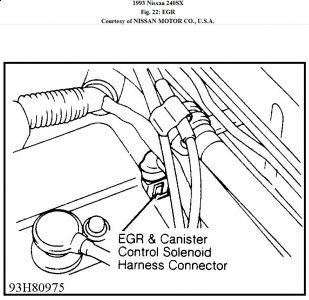
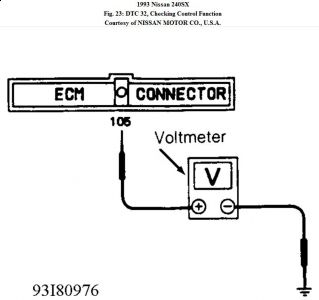
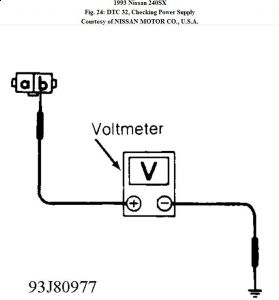
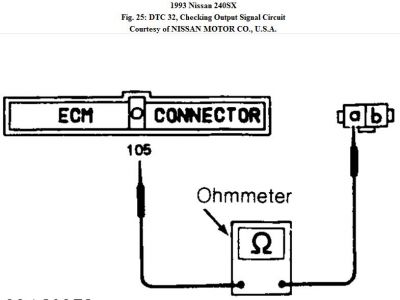
Any malfunction in the EGR system can cause the engine to run rough ( shaking ) and the strong gas smell as the combustion is incomplete.
Wednesday, November 18th, 2009 AT 11:08 AM





